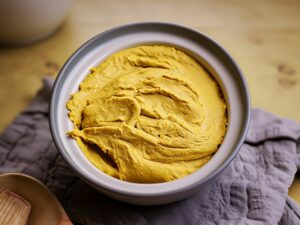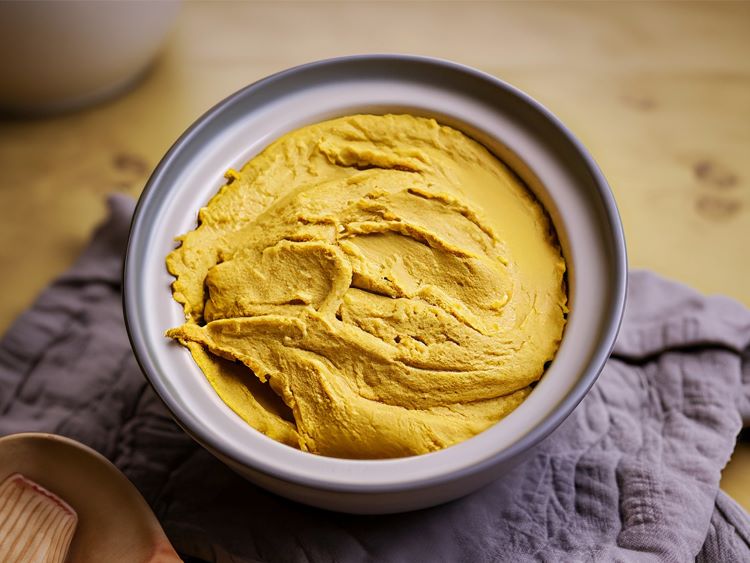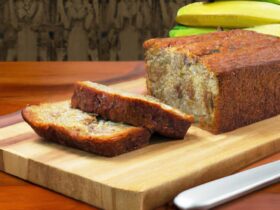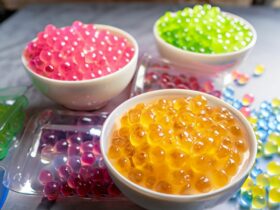Are you looking for a natural remedy for pain relief and respiratory issues? Look no further than the mustard plaster recipe! This age-old recipe has been used for centuries to ease the symptoms of coughs, colds, and even arthritis. Mustard plasters work by generating heat, which helps to increase blood flow and reduce inflammation in the affected area.
In this blog post, we’ll share with you a tried and true mustard plaster recipe that’s sure to give you some much-needed relief. From the therapeutic benefits of mustard to how to apply the plaster properly, we’ve got you covered. Plus, it’s a great alternative to over-the-counter medications that can have unwanted side effects.
How To Make Mustard Plaster At Home
This simple mustard plaster recipe yet effective DIY treatment involves a few basic ingredients, including mustard powder and flour, and is easy to prepare in the comfort of your own home. Always test a small area of skin first before applying the plaster to a larger area.
So, grab your ingredients and get ready to whip up a batch of this powerful remedy with our mustard plaster recipe. Your body will thank you for it!
Equipment:
- Spoon
- Small bowl
- Cheesecloth
Ingredients:
- Flour — ½ cup
- Water (warm) — 2 tablespoons
- Mustard seed (ground) — ¼ cup
Mustard Plaster Recipe – Step by Step Instructions
Step 01:
Take a small bowl and add the mustard powder and flour into it.
Step 02:
Mix the mustard powder and flour together well using a spoon or whisk. Stir for approximately 1 minute to ensure they are thoroughly combined.
Step 03:
Continue adding water little by little, stirring well after each addition, until a smooth paste consistency is achieved around 2 minutes. The paste should be thick yet pourable.
Step 04:
Take a cheesecloth and fold one side of the cheesecloth towards the center, about one-third of its width.
Step 05:
Spread the prepared paste onto one-half of the cheesecloth. Carefully fold the other half of the cheesecloth over the paste, covering it completely.
Step 06:
Gently press the folded cheesecloth to make sure the paste is sandwiched between the layers.
Benefits Of Using Mustard Plaster
The mustard plaster recipe is simple, easy to make, and can be applied at home. Mustard plasters have been used for centuries as a natural remedy for various ailments and have several potential benefits. Here are some of the benefits of using a mustard plaster:
- Pain Relief: Mustard plasters are known for their analgesic properties. When applied to areas of discomfort, such as sore muscles, joints, or arthritis-affected areas, the heat from the plaster can provide temporary relief and help reduce pain.
- Enhanced Blood Circulation: The heat generated by a mustard plaster can stimulate blood flow and improve circulation in the targeted area. This increased circulation can promote healing, reduce inflammation, and provide a sense of comfort and relaxation.
- Respiratory Relief: Mustard plasters can help alleviate respiratory congestion and provide relief from conditions such as coughs, bronchitis, and chest congestion.
- Detoxification: Mustard plasters are believed to have detoxifying properties. The mustard seed contains compounds that can stimulate sweating when applied to the skin, aiding in the elimination of toxins from the body.
In conclusion, the benefits of using a mustard plaster recipe are numerous. It is a natural remedy that has been used for centuries to treat various ailments. It is easy to make and can be applied at home without any complications.
History And Origins Of Mustard Plaster
The history and origins of mustard plaster can be traced back to ancient Greece and Rome. The Greeks used mustard seeds to prepare a poultice that was believed to relieve pain and inflammation.
The Romans also used mustard seeds as a medicinal herb and added it to their bath water to stimulate circulation. Over time, mustard plaster became a popular home remedy for treating respiratory conditions such as bronchitis, pneumonia, and asthma.
FAQs
How Long Should I Leave A Mustard Plaster On?
The recommended duration for leaving a mustard plaster on can vary. It is typically advised to leave it on for 10-20 minutes, but individual tolerance and sensitivity may vary. It’s important to monitor the skin closely and remove the plaster if any discomfort or irritation occurs.
How Do I Remove A Mustard Plaster?
To remove a mustard plaster, gently lift the cloth or towel from the skin. If any mustard residue remains, you can use a warm, damp cloth to gently wipe it away. Avoid scrubbing or rubbing the skin, as it may cause further irritation.
Can Anyone Use A Mustard Plaster?
Mustard plasters may not be suitable for everyone. It’s important to consider individual health conditions, allergies, and sensitivities. Pregnant women, young children, and individuals with certain medical conditions should consult with a healthcare professional before using mustard plaster.
Are There Any Risks Or Precautions When Using A Mustard Plaster?
Mustard plasters can cause skin irritation or burns if left on for too long or if applied directly to the skin without a protective layer. It’s important to follow the instructions carefully and check the skin frequently. If you have sensitive skin or any existing skin conditions, it’s best to consult with a healthcare professional before using mustard plaster.

Mustard Plaster Recipe
Equipment
- Spoon
- Small bowl
- Cheesecloth
Ingredients
- Flour ½ cup
- Water (warm) 2 tablespoons
- Mustard seed (ground) ¼ cup
Instructions
- Take a small bowl and add the mustard powder and flour into it.
- Mix the mustard powder and flour together well using a spoon or whisk. Stir for approximately 1 minute to ensure they are thoroughly combined.
- Continue adding water little by little, stirring well after each addition, until a smooth paste consistency is achieved around 2 minutes. The paste should be thick yet pourable.
- Take a cheesecloth and fold one side of the cheesecloth towards the center, about one-third of its width.
- Spread the prepared paste onto one-half of the cheesecloth. Carefully fold the other half of the cheesecloth over the paste, covering it completely.
- Gently press the folded cheesecloth to make sure the paste is sandwiched between the layers.






Leave a Reply